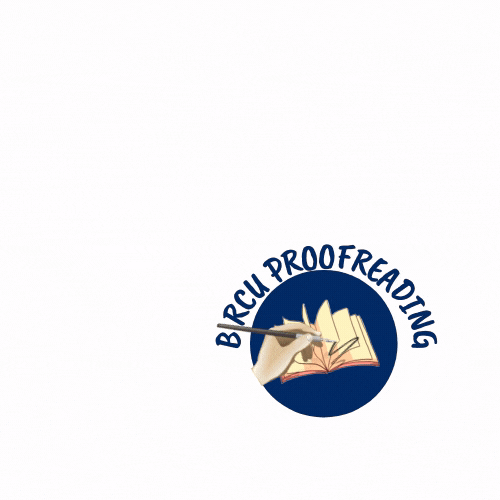Synergy of the Pentahelix Model to Establish Resilient Smes in Facing New Normal during Covid-19 Pandemic
Abstract
Coronavirus new which caused the outbreak of pneumonia and caused the closure of tourist destinations and caused many SMEs products to be returned by the souvenir center and SMEs production stopped during the Covid-19 pandemic. Banyuwangi Regency has also experienced the closure of tourist destinations starting March 2020 and has an impact on SMEs in Banyuwangi Regency, one of which is Ratu Manis SMEs. After the closure of tourist attractions, 70% of Ratu Manis SMEs products that were entrusted to the souvenir center and tourist attractions were returned. The number of SMEs Ratu Manis production has also decreased. Many exhibition events at every festival held in Banyuwangi Regency have been canceled due to the Covid-19 pandemic. Ratu Manis SMEs is trying to rise from the impact caused by the Covid-19 pandemic through synergy from various parties with the help of the government, academics, media and the community using the pentahelix approach. The research approach used in this research is descriptive research. The data sources used in this study are secondary and primary data sources. The data were collected using data collection techniques, namely observation and interviews with the source triangulation strategy for data validity. With penta helix synergy of industry, government, academia, media and the community sweet queen SMEs can survive to face the pandemic covid-19 and may even improve the quality of the products and sales turnover also increased from 20 kg to 40 kg per day.
Keywords
Full Text:
PDFReferences
Agustina, K., ank Karyono, O. (2019). Developing A Superior Business Strategy Through Industrial Environment And Resources In Manufacturing Smes In West Java Province. Budapest International Research and Critics Institute-Journal (BIRCI-Journal). P. 433-442.
Ansari, T.S. (2019). Reminding State Owned Enterprises (BUMN) Management Using the Principle of ’Business Judgment Rule’: A Preliminary Note. Budapest International Research and Critics Institute-Journal (BIRCI-Journal). P. 27-38
Arnkil, R. et al. (2010) Exploring Quadruple Helix Outlining user-oriented innovation models Final, Tampere: The CLIQ. Tampereen yliopisto: Tampereen yliopistopaino Oy Juvenes Print. Available at:http://www.arnkildialogues.com/files/testataan.kotisivukone.com/julkaisut/exploring_quadruple_helix-2010-1.pdf.
Barth, T. D. (2011) ‘The idea of a green new deal in a Quintuple Helix Model of knowledge, know-how and innovation’, International Journal of Social Ecology and Sustainable Development, 2(1), pp. 1–14. doi: 10.4018/jsesd.2011010101.
Correia, M. S. (2019) ‘Sustainability’. International Journal of Strategic Engineering, 2 29–38
Creswell, J.W. (2012) Education Research, Planning, Conducting and Evaluating Quantitative and Qualitative Research. 4th edn. Boston: Pearson. (2012) Education Research, Planning, Conducting and Evaluating Quantitative and Qualitative Research. 4th edn. Boston: Pearson.
Dzisah, J. and Etzkowitz, H. (2008) ‘Triple helix circulation: the heart of innovation and development’, International Journal of Technology Management and Sustainable Development, 7(2), pp. 101–115. doi: 10.1386/ijtm.7.2.101_1.
Fitriana, W. (2016) ‘Triple Helix Models for Agro-Tourism Development In West Sumatra’, in International Conference on Business, Economics, Socio-culture and Tourism. In Online Proceedings. 1st edn. Semarang: Economics Faculty, pp. 1–556.
Fitriana, W. (2017) ‘The Role of Triple Helix Actors for Agro-Tourism Development in West Sumatera’, MIMBAR, Jurnal Sosial dan Pembangunan, 33(2), pp. 219–227. doi: 10.29313/mimbar.v33i2.2098.
Hicks, C. C. Levine, A. Agrawal, A. Basurto, X. Breslow, S. J. Carothers, C. Levin, P. S. (2016) ‘Engage key social concepts for sustainability’. Science, 352 38–40
Izzati, M. F. and Wilopo (2018) ‘Implementasi Triple Helix Dalam Mendorong Pertumbuhan Daya Saing Untuk Menghadapi Masyarakat Ekonomi Asean’, Jurnal Administrasi Bisnis, 55(1), pp. 59–68. Available at: http://journal.lembagakita.org/index.php/emt/article/download/20
Leminen, S. Turunen, T. Westerlund, M. (2015) ‘The Grey Areas Between Open and Closed in Innovation Networks. Technology Innovation Management Review’, 5 6–18
Leydesdorff, L. Ivanova, I. (2016) “Open innovation” and “triple helix” models of innovation: can synergy innovation systems be measured? Journal of Open Innovation: Technology, Market, and Complexity, 2
Mathur, K. Berwa, A. (2017) ‘Sustainable competitiveness: redefining the future with technology and innovation. Journal of Sustainable Finance & Investment’, 7 290–306
Sturesson. Elof; Lindmark, Adam and Nilsson Roos. Markus, (2009). “Collaboration for Innovation - A Study in the Öresund Region”, Sweden: Lund University Libraries.
Suprihatin, E. Ferawati, I. W, Susanti, H. D. (2018) ‘PKM Kelompok UMKM Kue Kering di Kabupaten Banyuwangi’, Seminar Nasional Untag Surabaya ISBN 90786025069987, 1(1), pp. 153-167. Available at: http://jurnal.untag-sby.ac.id/index.php/semnasuntag/article/view/1666
Vanhaverbeke, W. (2013) ‘Rethinking Open Innovation Beyond the Innovation Funnel. Technology Innovation Management Review’, 3 6–10
Vyakina, I. V. (2018) ‘Social and environmental aspects of economic security as part of the sustainable development concept’. National Interests: Priorities and Security, 14 2259–2276
Wiyono, G. (2011) Merancang penelitian bisnis dengan alat analisis SPSS 17.0 & SmartPLS 2.0. Pertama. Yogyakarta: UPP STIM YKPN
DOI: https://doi.org/10.33258/birci.v4i1.1666
Article Metrics
Abstract view : 264 timesPDF - 189 times
Refbacks
- There are currently no refbacks.

This work is licensed under a Creative Commons Attribution-ShareAlike 4.0 International License.

This work is licensed under a Creative Commons Attribution-ShareAlike 4.0 International License.
_.gif)
















_.gif)



